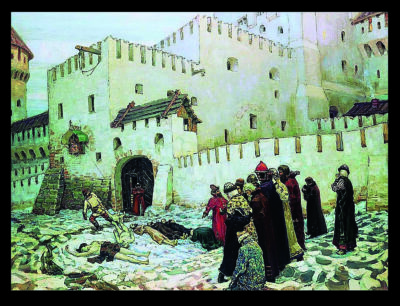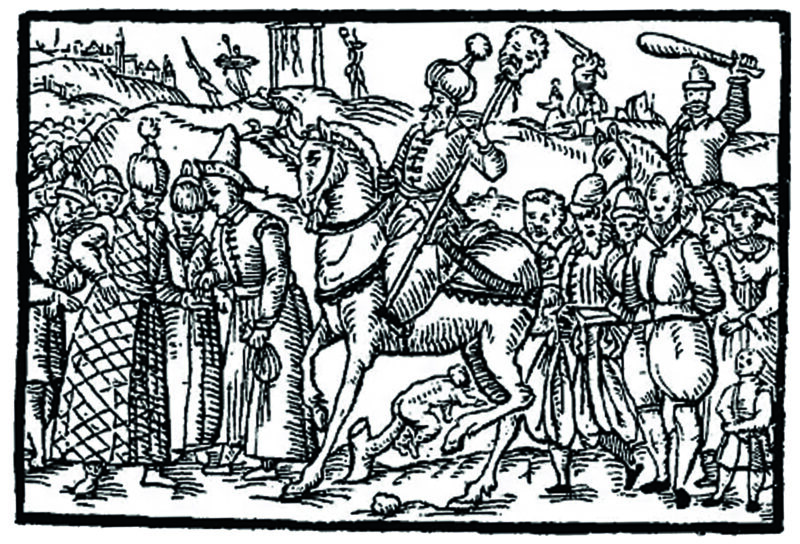Less than 100 years had passed since the last acts of genocide committed by Moscovy in Novgorod before the new targeted destruction of its population.
For this, it was enough for the Moscovite Tsar Ivan IV (the Terrible) only to have suspicions that the Novgorod authorities were seeking an alliance with Lithuania (i.e., in the current sense, European integration) again. The occasion was a slander in a letter sent by an offended resident of the still partially free capital.
“On January 2, 1570, the sovereign’s numerous vanguard army entered Novgorod, surrounding it on all sides with strong fortifications so that no one could escape. The churches and monasteries in the city and its environs were sealed; the courtyards of all wealthy citizens were sealed; guests, merchants, and officials were chained; women and children were kept in their homes. There was a silence of horror. No one knew either the guilt or the reasons for this disgrace. They awaited the arrival of the sovereign”.
On January 7, mass executions began. They spared no one: neither priests, nor merchants, nor artisans, nor townspeople, nor the elderly, nor women, nor children. They plundered all the churches of Novgorod, and burned down many churches and houses.
“Ivan and his son judged in this way: every day, from five hundred to a thousand or more Novgorodians were brought; they were beaten, tortured, burned with some kind of fiery substance, tied by the head or feet to sledges, dragged to the bank of the Volkhov, where this river does not freeze in winter, and thrown from the bridge into the water, entire families, wives with husbands, mothers with babies. Moscovite warriors rowed boats down the Volkhov River with stakes, pickaxes, and axes: anyone thrown into the river that floated up was stabbed and cut into pieces. These killings lasted five weeks and ended with general looting: Ivan and his retinue went around all the monasteries; took the church and monastery treasuries; ordered the courtyards and cells to be emptied, grain, horses, and livestock to be destroyed; he also subjected all of Novgorod to robbery, shops, houses, and churches; he himself went from street to street, watching as the predatory soldiers broke into chambers and storerooms, broke down gates, climbed into windows, and divided silk fabrics and furs among themselves. Hordes of villains were sent to destroy property and people’s lives, without choosing, without having an answer. This, as the chronicler says, “the inscrutable turmoil, fall, devastation of Velyky Novgorod lasted about six weeks.”
Nikolai Karamzin – Russian historian
The executions of monks, boyars, women and children, preceded by terrible torture, lasted 5 weeks in Novgorod. The days when 500-600 people were killed were considered lucky, because up to 1,500 were killed per day.
The Moscow Tsar personally executed some people and invented new types of torture, executions, and equipment for this.
The main perpetrators of the atrocities were the oprichniki, the de facto prototype of Russian penal authorities such as the NKVD, KGB, FSB…
Before, during and after Novgorod, they plundered monasteries and took everything valuable to Moscow. Executions and torture also took place in other cities – Pskov, Tver, Torzhok, etc.
In total, according to various sources, the number of victims reached from 27 to 60 thousand people.
During the 12 years of the oprychnyna, which Ivan the Terrible enforced into a large part of the population and territories, it devastated up to 90% of the lands of Moscovy.
The result was famine and numerous epidemics (the same will happen in the first half of the twentieth century).
According to official Russian historiography, the oprychnyna strengthened Russian statehood.


